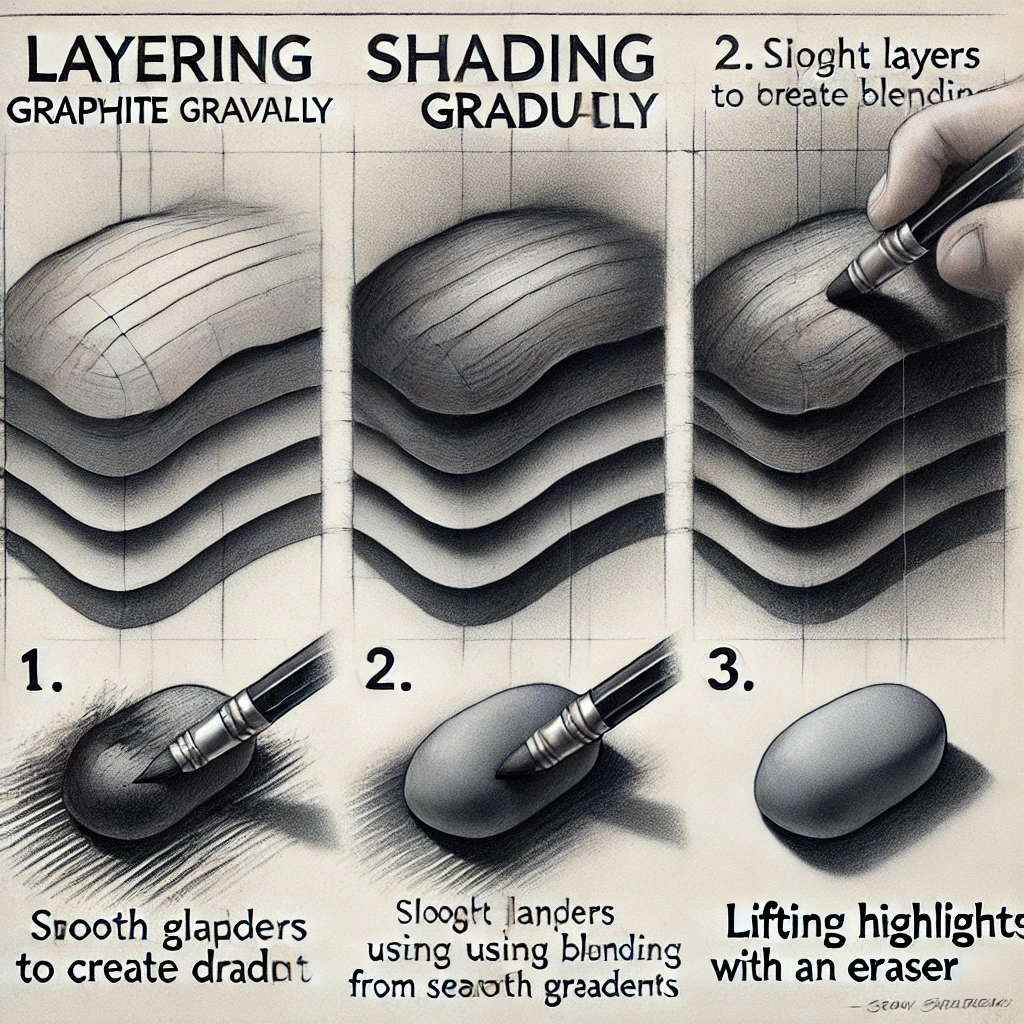
Pencil sketching is one of the most fundamental and expressive forms of art. Whether you’re a beginner or an experienced artist, understanding the right techniques, tools, and shading methods can take your sketches to the next level. In this guide, we’ll explore the essentials of pencil sketching and how to refine your skills to create realistic and stunning artwork.
Essential Tools for Pencil Sketching
Choosing the right materials is key to achieving the best results in your sketches. Here are the must-have tools:
Graphite Pencils
✔ Range from 9H to 9B – Harder pencils (H) create light, fine lines, while softer pencils (B) are great for shading and depth.
✔ Best brands: Faber-Castell 9000, Staedtler Mars Lumograph, and Prismacolor Premier.
🛒 Shop high-quality graphite pencils here
Sketchbooks and Paper
✔ Smooth Paper – Ideal for graphite, helping create fine details.
✔ Toothed Paper – Holds more graphite, great for textured shading.
✔ Best brands: Strathmore 400 Series, Canson XL, and Fabriano Artistico.
🛒 Find the perfect sketchbook here
Blending and Erasing Tools
✔ Blending Stumps & Tortillons – Smooth out shading for soft transitions.
✔ Kneaded Eraser – Lifts graphite for highlights without damaging paper.
✔ Eraser Pen – Adds fine details and sharp highlights.
🛒 Discover top-rated blending tools here
Techniques to Improve Your Pencil Sketching
1. Mastering Line Control
🖋️ Use varied pressure – Light pressure for soft lines, heavier for bold strokes.
✍️ Experiment with different grips – Overhand for shading, tripod grip for details.
🎨 Practice cross-hatching & contouring – Helps add depth and texture.
2. Understanding Light and Shadow
💡 Observe light sources – Identify highlights, mid-tones, and shadows.
🖌️ Use shading techniques – Try hatching, cross-hatching, and stippling for texture.
🌗 Create a value scale – Helps train your eye for accurate shading.
3. Enhancing Realism Through Shading
🔲 Layer graphite gradually – Start light and build up dark areas.
🖌️ Blend smoothly – Use blending stumps or tissue for seamless gradients.
🎯 Lift highlights with an eraser – Creates realistic depth and contrast.

Common Mistakes and How to Avoid Them
🚫 Over-blending – Can make sketches look too soft; leave some texture for realism.
🚫 Ignoring proportions – Use guidelines and grids to maintain accuracy.
🚫 Skipping warm-ups – Quick sketches improve hand control and technique.
Final Thoughts: Elevate Your Pencil Sketching Skills
With the right tools and techniques, pencil sketching can be a rewarding and expressive art form. Focus on improving shading, line control, and light perception to take your sketches to new heights.
🎨 Want to upgrade your art supplies? Browse our top recommendations and start sketching like a pro today!
📌 Love this guide? Pin it to your Pinterest board for quick reference and inspiration!
[…] Types of Shading Techniques […]